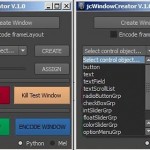The ChaosGroup have announced a beta cycle for the 3DS Max version of V-Ray 3.0, opening the beta program to registered users of V-Ray.
V-Ray 3 looks to have some new and fairly significant features in functionality and speed and certainly in the additions and changes to the progressive rendering, fundamentally shifting it from a preview renderer (VrayRT) to a featured progressive production renderer.
Through extended research and profiling of customer scenes, in V-Ray 3.0 we’ve optimized core ray tracing calculations for brute force and path tracing. Early comparisons show speed increases from 1.5 to 5 times faster. In this video we demonstrate the improved rendering speed of V-Ray 3.0
Breaking Down What’s New in V-Ray 3
V-Ray 3 is Faster at Rendering.
Creating optimizations in the core V-Ray tracing calculations, the Chaos Group were able to increase the speed of rendering in V-Ray from 1.5 to 5 times faster in some cases, simply from the information they received from researching and profiling V-Ray user scenes.
V-Ray 3 Introduces UI Modes.
V-Ray 3 implements modes for the user interface, with 3 basic UI Modes that can run V-Ray in Basic, Advanced and Expert mode, providing quick controls for the casual user, but also additional controls and parameters when needed.
New Skin Raytraced SSS Shaders and OSL Support.
V-Ray 3 will sport some new shaders, with a new, layered and intuitive skin shader.
Get Set Up for Rendering quicker with Quick Settings and Presets.
In addition to the UI changes, V-Ray 3 adds some quick settings and presets, allowing you to quickly set up and change settings using a single slider.
Unified Shader Descriptions for All Applications.
V-Ray expands its VisMat functionality into VRmats offering unified compatibility right across the board between host applications using V-Ray. This means that if you create a shader for V-Ray Sketchup, you can have that come over when you bring it into 3DS, and similarly into Maya.
V-Ray 3 is Set for Linear Workflow by Default.
Not that it was tremendously tedious to set up V-Ray for linear workflow in comparison to mental ray, but V-Ray will now operate in Linear Color mode by default, which will be a time saver for sure.
Open Formats and Color
V-Ray 3 provides support for the Alembic file format, as well as OpenColorIO, Deep Data, and OpenEXR 2.
Define ANY Shape as a Render Region.
You can control the shape of your render region using an image mask. What!
Automatically Collect Scene Data Before Distributing a Render
V-Ray 3 will now collect all external assets and data when using distributed rendering, no more missing textures or animation caches.

